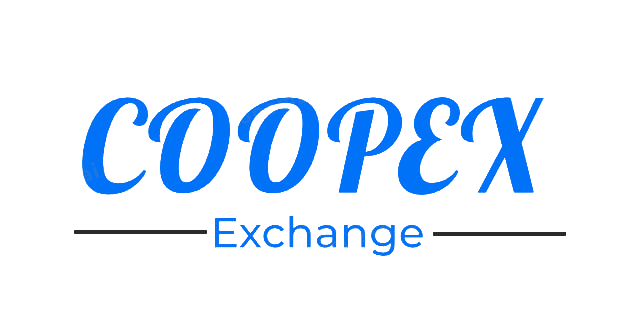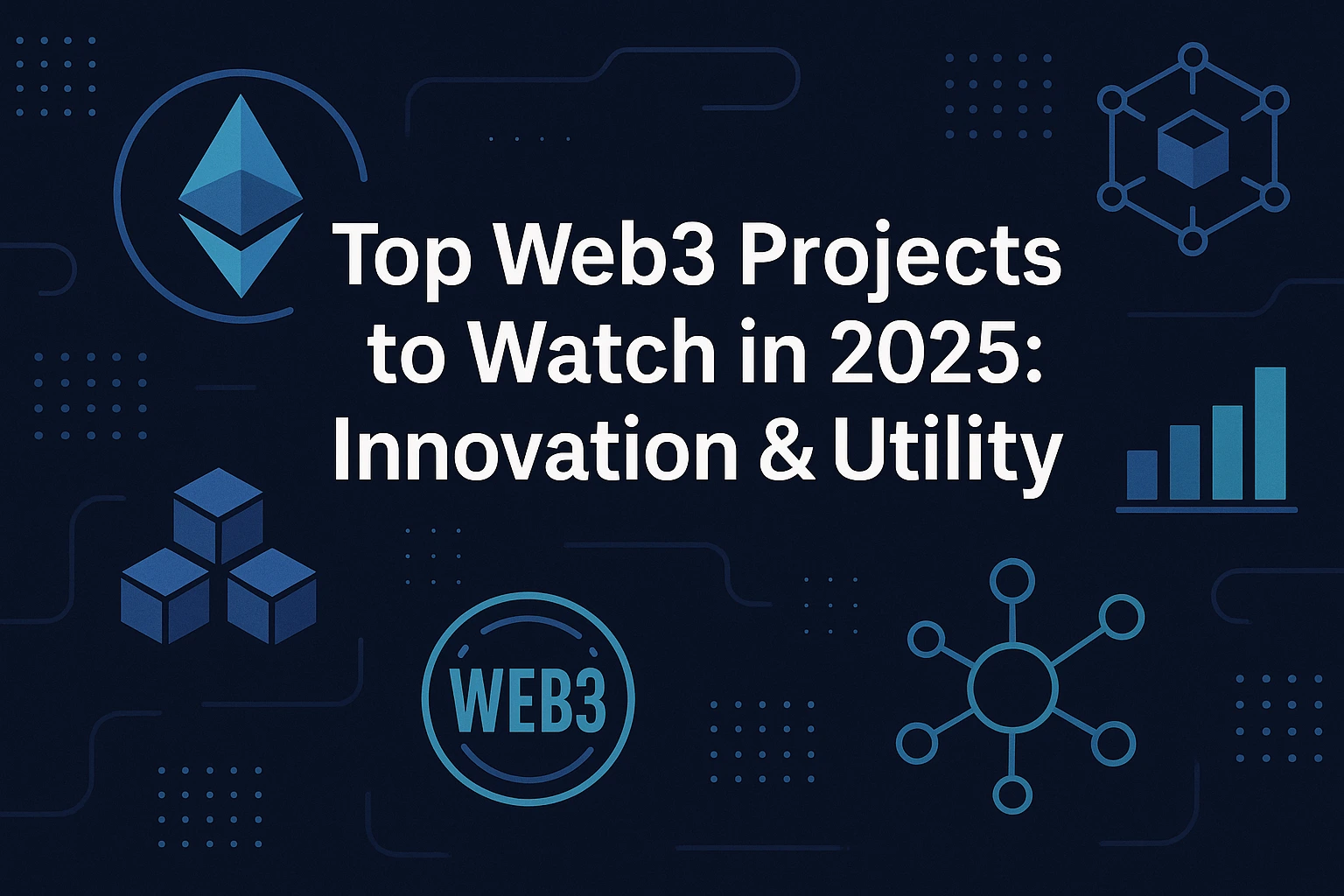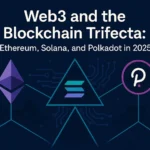The Web3 ecosystem has undergone remarkable transformation since its early days. As we navigate through 2025, we’re witnessing unprecedented adoption of blockchain technologies that extend far beyond speculative tokens. Today’s top Web3 projects are delivering tangible utility, solving real-world problems, and creating genuine value across industries.
Having been deeply immersed in the cryptocurrency and Web3 space for over seven years, I’ve watched countless projects come and go. What distinguishes the current generation of Web3 projects is their focus on accessibility, scalability, and practical applications that appeal to both crypto natives and mainstream users.
In this comprehensive guide, we’ll explore the most innovative Web3 projects dominating the landscape in 2025, examining their technologies, use cases, and potential for long-term impact. Whether you’re a seasoned crypto investor or just beginning to explore the Web3 ecosystem, this curated selection will help you identify projects with genuine utility and growth potential.
What Are Web3 Projects and Why They Matter in 2025
Before diving into specific projects, let’s clarify what we mean by Web3 projects. These are decentralized applications and platforms built on blockchain technology that aim to create an internet where users maintain ownership of their data and digital assets. Unlike Web2 platforms controlled by centralized corporations, Web3 projects emphasize user sovereignty, censorship resistance, and community governance.
What makes the best Web3 projects of 2025 particularly significant is their evolution beyond theoretical concepts to practical implementations that address:
- Scalability challenges that previously limited blockchain adoption
- User experience improvements making Web3 accessible to non-technical users
- Cross-chain interoperability enabling seamless asset and data transfer
- Real-world asset tokenization bridging traditional finance with DeFi
- Sustainable economic models that benefit all stakeholders
Top Web3 Projects Revolutionizing DeFi in 2025
1. Aave Nexus
Category: DeFi / Lending
Blockchain: Multi-chain (Ethereum, Optimism, Base, Arbitrum, Solana)
Aave Nexus has transformed from a simple lending protocol to become the central nervous system of decentralized finance. In 2025, it stands as one of the top Web3 crypto projects with over $54 billion in total value locked across five blockchains.
What makes Aave Nexus exceptional among Web3 projects:
- Real-world asset (RWA) integration allowing users to borrow against tokenized real estate, bonds, and private equity
- Adaptive interest rates that automatically adjust based on market conditions and liquidity
- Cross-chain liquidity aggregation maximizing capital efficiency
- Institutional-grade risk management with decentralized insurance protocols
“Aave Nexus exemplifies how Web3 projects can bridge traditional finance with DeFi infrastructure, creating an inclusive financial system that serves both retail and institutional users.” — Maria Chen, DeFi Strategist
Recommended reading: Ethereum Trends in 2025
2. Synthetix Omniverse
Category: Derivatives / Synthetic Assets
Blockchain: Ethereum, Layer 2s
Synthetix has evolved dramatically to become one of the best Web3 projects in the derivatives space. The platform enables users to gain exposure to virtually any asset—cryptocurrencies, commodities, stocks, indices—through synthetic tokens that track real-world prices.
Key innovations making Synthetix a standout among top Web3 projects:
- Zero slippage trading even for assets with limited liquidity
- Decentralized oracle network with cryptographic proofs for price validity
- Cross-margin positions across multiple synthetic assets
- DAO-governed risk parameters ensuring protocol stability
Synthetix Omniverse has seen trading volume increase by 780% since 2023, with over 3.5 million unique addresses interacting with the protocol.
3. Equilibrium
Category: DeFi / Stablecoins
Blockchain: Polkadot, Kusama, Ethereum
In the crowded stablecoin market, Equilibrium has distinguished itself as one of the most resilient Web3 projects by creating a multi-collateral stablecoin system with advanced risk management. Their EQ stablecoin maintains perfect parity while being fully decentralized—something many projects promised but few delivered.
Standout features making Equilibrium essential among top Web3 crypto projects:
- Dynamic collateralization ratios based on asset volatility
- Negative interest rates during contraction periods
- Bailout liquidity mechanism preventing catastrophic liquidations
- Cross-chain collateral management leveraging Polkadot’s interoperability
Recommended reading: Polkadot in 2025: The Engine Behind the Multichain Blockchain Revolution
Web3 AI Projects Leading the Technological Convergence
The integration of artificial intelligence with blockchain technology has created some of the most exciting new Web3 projects. These projects are revolutionizing how AI models are trained, deployed, and monetized in decentralized ecosystems.
4. Ocean Protocol Matrix
Category: Data Economy / AI
Blockchain: Ethereum, Polkadot
Ocean Protocol has transformed into the definitive marketplace for AI data and compute resources. As one of the pioneering Web3 AI projects, Ocean Matrix enables data scientists, researchers, and businesses to securely share, monetize, and access datasets while maintaining privacy and ownership rights.
What makes Ocean Protocol Matrix a standout among Web3 AI projects:
- Decentralized compute-to-data allowing AI training without exposing raw data
- Reputation system ensuring dataset quality and accuracy
- Tokenized data streams enabling micropayments for real-time information
- Verifiable AI model training with cryptographic proofs
With over 35,000 datasets and 12,000 AI models available on the platform, Ocean has created a thriving economy around data ownership.
5. Render Network
Category: Decentralized Computing / AI
Blockchain: Solana
Render Network has emerged as one of the most practical Web3 projects by creating a decentralized GPU computing marketplace. Initially focused on rendering services for 3D artists, Render has expanded to become the backbone infrastructure for AI model training and inference.
Key aspects making Render Network a top Web3 project in the AI space:
- Specialized hardware markets matching specific compute needs with appropriate resources
- Dynamic pricing model optimizing for cost and speed based on user preferences
- Zero-knowledge computation ensuring privacy for sensitive AI workloads
- Composable compute modules for customized AI workflows
| Metric | 2023 | 2025 (Current) | Growth |
|---|---|---|---|
| Active Nodes | 12,000 | 78,000 | +550% |
| Monthly Compute Hours | 1.5M | 14.7M | +880% |
| Revenue to Node Operators | $8.2M | $97.4M | +1,087% |
Recommended reading: The History of Solana: Origins, Growth & Impact in Web3
Gaming and Metaverse: Top Web3 Projects Creating Immersive Experiences
6. Illuvium Universe
Category: Gaming / Metaverse
Blockchain: Ethereum, Immutable X
Illuvium has transcended the typical “play-to-earn” model to create a genuinely engaging AAA gaming experience built on Web3 principles. The project’s evolution into a full gaming universe with multiple interconnected titles has set a new standard for blockchain gaming.
Features making Illuvium one of the best Web3 projects in gaming:
- Interoperable assets usable across all games in the Illuvium Universe
- Land as productive assets generating resources for the in-game economy
- Fair launch economics balancing player rewards with sustainability
- Hybrid governance model involving both players and investors
With over 3.8 million registered players and consistent monthly active users exceeding 850,000, Illuvium has proven that blockchain games can compete with traditional gaming experiences while offering true digital ownership.
7. Decentraland Prime
Category: Metaverse / Virtual Real Estate
Blockchain: Ethereum, Polygon
As an early metaverse project, Decentraland has matured significantly to become one of the most accessible and feature-rich virtual worlds. The launch of Decentraland Prime in late 2024 brought substantial improvements to the platform’s technical capabilities and user experience.
What makes Decentraland Prime stand out among top Web3 projects in 2025:
- Dynamic rendering system supporting thousands of concurrent users in high-fidelity environments
- Spatial audio integration creating immersive social experiences
- AI-powered NPCs enhancing environmental storytelling
- Low-barrier creator tools democratizing metaverse development
Decentraland’s growth metrics speak to its success as one of the leading Web3 projects in the metaverse space:
- 120,000 daily active users
- $1.2 billion in virtual real estate transactions
- 2.3 million unique digital assets created and traded
Infrastructure: Backbone of the Best Web3 Projects
8. Celestia
Category: Blockchain Infrastructure / Modular Blockchains
Blockchain: Native (Modular Data Availability Layer)
Celestia has revolutionized blockchain architecture with its modular approach to data availability. By separating consensus, execution, and data availability into specialized layers, Celestia enables unprecedented scalability for the entire Web3 ecosystem.
Key innovations making Celestia one of the top Web3 projects in infrastructure:
- Data availability sampling allowing light clients to verify data without downloading entire blocks
- Rollup-centric architecture supporting multiple execution environments
- Namespace partitioning reducing data redundancy
- Fraud proof system ensuring data correctness without full verification
“What makes Celestia particularly significant among Web3 projects is how it’s enabling an explosion of application-specific blockchains that can optimize for particular use cases while maintaining security.” — Dr. Amir Hafezi, Blockchain Researcher
9. The Graph Protocol
Category: Data Indexing / API Infrastructure
Blockchain: Multi-chain
The Graph has solidified its position as the “Google of blockchains” by creating a decentralized indexing protocol essential for efficient dApp development. As Web3 projects have proliferated across multiple chains, The Graph’s importance has only increased.
Standout features making The Graph one of the most essential Web3 projects:
- Cross-chain data unification enabling queries across multiple blockchains
- AI-enhanced indexing optimizing for query speed and cost
- Verifiable computation ensuring index accuracy
- Specialized subgraphs for DeFi, NFTs, governance, and more
The Graph now processes over 45 billion monthly queries, serving as the data backbone for more than 70,000 dApps across the Web3 ecosystem.
New Web3 Projects Gaining Momentum in 2025
While established projects continue to evolve, several new entrants are making waves in the Web3 space with innovative approaches and fresh perspectives.
10. Gaia Protocol
Category: Climate Finance / Regenerative Economics
Blockchain: Polkadot, Ethereum
Gaia Protocol has quickly gained recognition as one of the most impactful new Web3 projects by creating a decentralized marketplace for verifiable carbon credits and environmental assets. By solving the problems of double-counting and verification in carbon markets, Gaia has unlocked billions in climate finance.
What makes Gaia Protocol a rising star among Web3 projects:
- IoT-integrated monitoring for real-time environmental data collection
- Tokenized impact certificates representing verified positive externalities
- Quadratic funding mechanism for environmental public goods
- Sustainable yield farming incentivizing ecological restoration
Since launching in late 2024, Gaia Protocol has facilitated the financing of:
- 287,000 hectares of reforestation
- 42 renewable energy projects in developing nations
- $345 million in climate funding to indigenous communities
11. Identity Nexus
Category: Self-Sovereign Identity / Reputation
Blockchain: Ethereum, Solana, Polygon
Identity Nexus addresses one of the fundamental challenges in Web3 adoption: portable, secure, and privacy-preserving digital identity. As one of the most promising new Web3 projects, Identity Nexus enables users to maintain control of their credentials while selectively disclosing information.
Key features making Identity Nexus a breakthrough among Web3 projects:
- Zero-knowledge credential verification proving attributes without revealing data
- Cross-chain reputation passporting aggregating reputation across platforms
- Decentralized identifier resolution compatible with traditional identity systems
- Credential recovery mechanisms preventing permanent identity loss
Identity Nexus has been integrated into over 240 dApps and services, with more than 1.7 million unique identities created on the platform.
How to Evaluate Web3 Projects for Long-term Potential
As an investor or participant in the Web3 ecosystem, distinguishing between genuinely valuable projects and short-lived trends is crucial. Here’s a framework I’ve developed over years of analyzing Web3 projects:
Assessment Criteria for Top Web3 Crypto Projects
- Problem-Solution Fit
- Does the project solve a real problem that cannot be addressed by centralized alternatives?
- Is blockchain technology actually necessary for the solution?
- Team Composition
- What is the team’s track record in both blockchain and relevant industry domains?
- Is there balanced expertise across technical development, tokenomics, and business strategy?
- Technical Architecture
- How does the project approach blockchain trilemma trade-offs?
- Is the codebase well-audited and actively maintained?
- Tokenomics
- Does the token have a clear utility within the ecosystem?
- Are incentives properly aligned for all stakeholders?
- What mechanisms exist to maintain long-term value accrual?
- Adoption Metrics
- Look beyond total value locked (TVL) to metrics like:
- Daily/monthly active users
- Transaction growth
- Developer activity
- Integration with other Web3 projects
- Look beyond total value locked (TVL) to metrics like:
Red Flags in Web3 Projects to Avoid
- Excessive token allocation to team/investors
- Lack of technical documentation or whitepaper
- Unrealistic promises of returns or adoption
- Overly complex token economics
- Limited GitHub activity or centralized repositories
Conclusion: The Future Trajectory of Web3 Projects
As we’ve explored throughout this analysis, the Web3 landscape of 2025 is defined by projects delivering genuine utility, solving meaningful problems, and creating sustainable value. The days of pure speculation have given way to an ecosystem increasingly focused on real-world applications and mainstream adoption.
The top Web3 projects highlighted here represent various approaches to building the decentralized digital economy—from financial infrastructure to creative platforms, from data marketplaces to virtual worlds. What unites them is a commitment to user sovereignty, transparent mechanisms, and community ownership.
For investors, developers, and users looking to engage with Web3 projects, the key is to look beyond marketing hype and focus on fundamental value creation. The most successful projects will be those that solve genuine pain points while making blockchain’s benefits accessible to everyday users.
As we move forward, expect to see continued convergence between Web3 projects and traditional industries, further integration of AI capabilities, and increasing focus on regulatory compliance and sustainability. The Web3 ecosystem is maturing, and the projects leading this evolution are setting the foundation for a more equitable, transparent, and user-centric digital future.
Recommended reading: Web3 in 2025: Global Growth, Cyber Risks & Strategic Alliances
FAQs About Top Web3 Projects
What are Web3 projects exactly?
Web3 projects are decentralized applications, protocols, or platforms built on blockchain technology that aim to create an internet where users maintain control over their data and digital assets. Unlike traditional Web2 applications controlled by centralized companies, Web3 projects typically operate through open-source code, decentralized governance, and tokenized incentive structures.
How do I participate in Web3 projects beyond investing?
Many of the best Web3 projects offer multiple participation avenues including:
- Contributing to development (most are open-source)
- Participating in governance by voting on proposals
- Providing liquidity or staking to secure networks
- Creating content or applications on the platforms
- Joining DAOs associated with the projects
Are Web3 AI projects different from traditional AI companies?
Yes, Web3 AI projects differ fundamentally from centralized AI companies in several ways:
- Data ownership remains with the contributors rather than the platform
- Computation can be decentralized rather than concentrated in corporate data centers
- Economic benefits flow to network participants through token incentives
- Models and training data often have higher transparency and verifiability
What makes some Web3 projects more successful than others?
The most successful top Web3 projects typically share these characteristics:
- Strong product-market fit addressing real user needs
- Intuitive user experiences that abstract away blockchain complexity
- Sustainable tokenomics with balanced incentives
- Active developer communities and consistent shipping of improvements
- Clear regulatory strategy and compliance considerations
How important is the choice of blockchain for Web3 projects?
The underlying blockchain significantly impacts a project’s capabilities, including:
- Transaction costs and speed
- Smart contract functionality and security
- Ecosystem integration possibilities
- Regulatory exposure
- Scaling capabilities
The best Web3 projects often become multi-chain or select blockchains specifically optimized for their use case.

Herbert Vega is a blockchain and cryptocurrency expert with a passion for decentralized technology. He is the founder and CEO of XYZ Decentralized Exchange, a cutting-edge platform that allows users to trade cryptocurrencies in a secure and decentralized manner.




